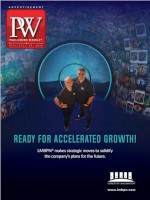Most publishers have been digitizing their workflows to achieve significant benefits in cost, quality, and reduced cycle times. Some have even begun to coalesce development, production, and distribution in brand-new ways that mitigate the traditional divide between editorial and production, utilizing a combination of collaborative editing, WYSIWYG rendering, and push-button distribution. But many publishers still haven’t fully embraced the possibilities of digital-first publishing: getting products into the hands of customers early and using fast feedback loops to rapidly iterate on product-market fit to drive revenue growth. For those in that camp, here are some things you may be overlooking.
Publishing cycle time is improving
The product development process is roughly sequential, consisting of four major steps: ideation, development, production, and manufacturing/distribution. This results in a very long time between concept and delivery to market, sometimes as long as 24 months for a first edition. Publishers have been addressing this long cycle with workflow improvements and technology, and they’ve been racking up some substantial gains: 50% reduction in cycle time and cost, and substantial improvements in product quality. But there still isn’t an obvious, effective way to capture the latest market realities to incorporate them into product development.
Digital access to the market is also improving. There are now several factors leading publishers to be able to reflect market realities back into their publishing process, including direct relationships with readers, increasing availability and use of publisher platforms, more third-party platforms that provide quantitative feedback, and more sophisticated use of data by publishers.
Retailers—particularly online retailers—have been able to capitalize on direct access to readers for a very long time, providing recommendations on the products and features customers might like next. Publishers have also approached customers directly via book clubs and mailing lists, but most of this access has been oriented toward marketing books post-publication. OpenRoad Media takes a step back from this and drives rights acquisition based on the preferences of readers on their mailing lists. Callisto Media drives acquisitions based on market trends using analysis of consumer searches and trending topics.
Early testing is primarily a feature of education and professional publishing platforms, allowing these publishers to take outputs from the early stages of product development and test them with actual customers. This enables these publishers to test efficacy, interest, and usage, and to use that information in quick feedback cycles to improve the products prior to full release. While it’s not clear how early testing might be used for fiction, O’Reilly is offering early editions of many new titles and both accelerating the availability of critical information to users and gaining increased revenue and lock-ins to their offerings.
Many third-party platforms provide similar information on usage. VitalSource, for example, has long had the ability to report on the usage of books, providing aggregated information about what pages have been read and when during a reader’s progress. This same feature is offered by e-book platforms such as Kobo.
These features require sophistication on the part of publishers to recognize the value of this data and be able to act on it early enough in the development process to influence the creation of the title. Many large publishers have data scientists on staff, even if they’re mostly analyzing sales and marketing activities.
The real win: product-market fit
As cycle times decrease and access to reader data increases, there is increased ability to improve product-market fit: changing a title to make it more effective/entertaining, changing its positioning, pivoting to a different target readership, or even making better decisions about formats and print runs.
Changing a title during development is most applicable in education, professional, academic publishing and for many trade nonfiction titles. Most educational publishers are taking advantage of digital-first offerings to update their titles on the fly, even going so far as to eliminate editions altogether in programs known as continuous publishing. Professional computer publishers can offer early editions of their titles, often in conjunction with live programming environments, giving readers the ability to test code and provide up-to-date information. And platforms such as Leanpub, discussed in Todd Sattersten’s book Every Book Is a Startup, are making this capability available to self-published authors.
While there are significant gains to be had from using lean content development to reduce cycle time and cost and to improve quality, some of the biggest gains to publishers can be achieved by using digital-first publishing in combination with quick market feedback to improve product-market fit. They can engage customers with products far earlier; achieve rapid iteration of their content, resulting in better products; and enable rapid post-publication updates and improvements.
Ken Brooks is the founder of the consulting firm Treadwell Media Group. He has served as chief content officer at Wiley and COO at Macmillan Learning, and has held senior roles at other major publishers.



 Volume 268
Issue 38
09/20/2021
Volume 268
Issue 38
09/20/2021





